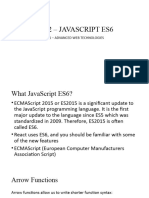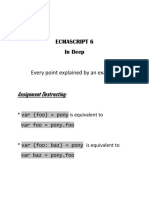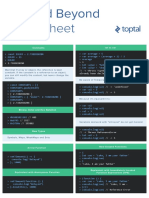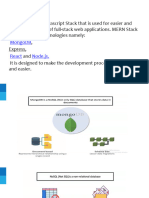0% found this document useful (0 votes)
9 views4 pagesES6 Cheatsheet
The ES6 Cheatsheet provides a concise overview of key features in ES6, including variable declarations with 'let' and 'const', arrow functions, template literals, and default parameters. It also covers destructuring assignment, spread and rest operators, promises, modules, classes, enhanced object literals, and data structures like Map and Set. Each feature is illustrated with simple examples for clarity.
Uploaded by
Mayank SoodCopyright
© © All Rights Reserved
We take content rights seriously. If you suspect this is your content, claim it here.
Available Formats
Download as PDF, TXT or read online on Scribd
0% found this document useful (0 votes)
9 views4 pagesES6 Cheatsheet
The ES6 Cheatsheet provides a concise overview of key features in ES6, including variable declarations with 'let' and 'const', arrow functions, template literals, and default parameters. It also covers destructuring assignment, spread and rest operators, promises, modules, classes, enhanced object literals, and data structures like Map and Set. Each feature is illustrated with simple examples for clarity.
Uploaded by
Mayank SoodCopyright
© © All Rights Reserved
We take content rights seriously. If you suspect this is your content, claim it here.
Available Formats
Download as PDF, TXT or read online on Scribd
/ 4























































